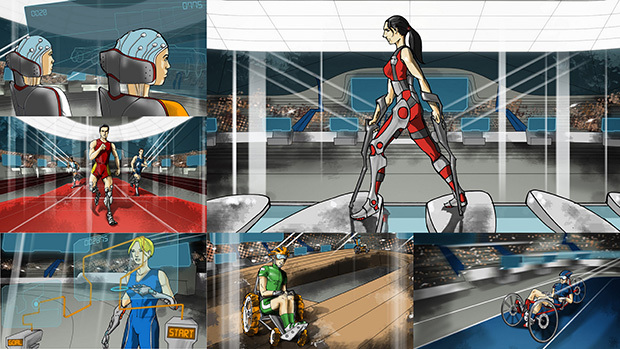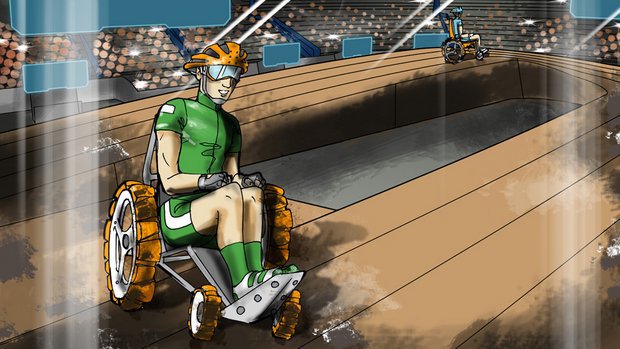Kibatlon 2016: cyborg competitions
- Transfer

The Olympic Games are competitions among the most trained and most talented athletes on the planet. Paralympic Games - the same, but for athletes with disabilities. To be able to compete, many Paralympic athletes use assistive devices and prostheses, some of which have already turned into complex electromechanical devices.
The impact of technology on the Olympics is already extremely large. In addition to the 2012 debate about whether the Paralympic sprinter, Oscar Pistorius, gained an advantage thanks to his carbon fiber prosthesesdisputes about friction-reducing suits for swimmers and runners do not stop. Any sport that uses some kind of equipment (shooting, archery, cycling, etc.) is more and more attracted to the use of high technology, since human capabilities inevitably lose to technology. Yes, and because it is easier to improve the technique than a person.
Paralympics are most dependent on a high-tech sport. Prostheses have evolved into active systems that can recognize human intentions (via neural interfaces) and independently use servos to more effectively replace real limbs. But this is already going beyond biology, so it makes sense to create a completely new type of competition.
Kibatlon is a competition of paratlets using high-tech assistive devices, including robotics. These competitions are divided into disciplines depending on the technical improvements used: artificial legs, arms, exoskeletons, armchairs, electro-stimulated muscles, neurointerfaces. Ancillary devices can be both serial and experimental. In each discipline they will be awarded two medals: the athlete himself and the manufacturer of the used auxiliary device (analogue of the Designers Cup in Formula 1).
Disciplines :
Competition of athletes with active prostheses of both hands. Goal: complete the task as soon as possible.

Race with the use of the neural interface. Purpose: victory in a computer racing simulator.

Bicycle race with the use of electrical muscle stimulation. The race involves paralyzed athletes who are unable to control their limbs. This function falls on the system of electrical stimulation of muscles.

Athletes run with active prostheses on both legs.

Athletes run in exoskeletons. Athletes paralyzed from the lower back or chest and below are allowed.

Wheelchair race.

A lot of additional information can be found at http://www.cybathlon.ethz.ch/ .
At some point, and perhaps soon, Paralympic athletes using robotic devices will be able to compete on equal terms and then surpass completely healthy athletes. Take, for example, a task with a wire loop. The rules currently do not say anything about sensors. It is clear that the prosthesis can be adjusted so that the athlete is not able to cope with the task. If you develop this idea, then a successful combination of sensors and servos will allow you to simply take the wire with one hand and go through the other stages of the competition, while the prosthesis will independently perform all the necessary actions.
Another question arises: how much of the athlete should be real and how much artificial? And if there will be more artificial, then what is considered a sport?
